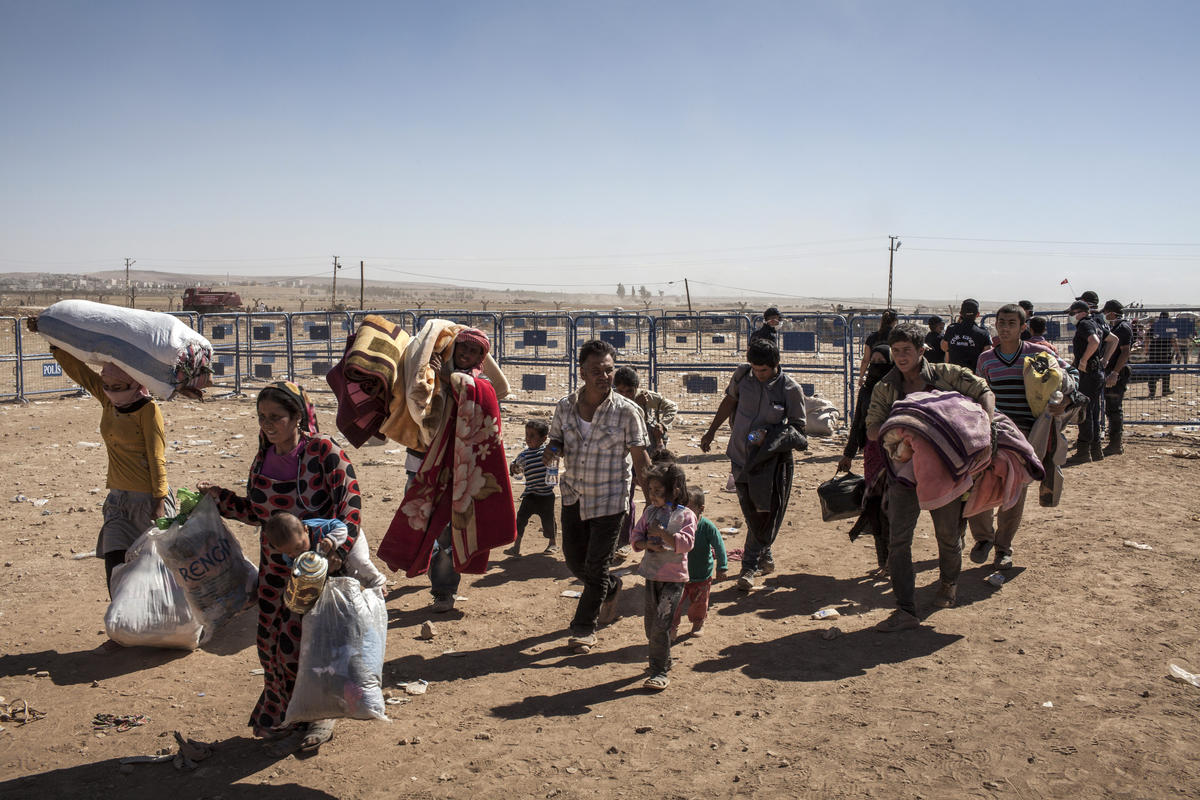Flow of asylum seekers to South Africa grows in 2006
Flow of asylum seekers to South Africa grows in 2006

PRETORIA, South Africa, February 2 (UNHCR) - Growing numbers of asylum seekers entered South Africa last year, with more than a third of applications coming from Zimbabweans, the South African government has announced.
The 2006 statistical report on refugees and asylum seekers in South Africa showed that the number of new applicants for refugee status exceeded the government's stepped-up efforts to clear the backlog that had existed from previous years.
The 53,361 additional requests for asylum received by the Department of Home Affairs (DHA) - almost 19,000 of them from Zimbabweans - outpaced the 29,325 cases from previous years adjudicated under the Backlog Project. Of the new cases last year, only 4,086 were finalised.
"The number of cases awaiting an initial decision continued to increase," the report said. "The number of pending cases has increased to 49,275 for applications received in 2006."
"The resurgence of the backlog is a clear warning that asylum procedures are far from becoming efficient and that refugee offices are not responding positively and proactively to the mass influx of asylum seekers," the DHA said in a report that bluntly stated the challenges it faces.
The government had hoped that 2006 would be a watershed in its efforts to clear asylum applications, opening additional offices to handle the more than 111,000 applications that were pending at the end of 2005.
The DHA, which had hoped to clear the old applications by the end of this year, finalised 26 percent of the pre-2006 cases last year - including all 6,723 pending applications by Zimbabweans. That left 81,832 old cases still to be processed.
However, the new inflows during the year showed the challenge facing the government of South Africa. In the first quarter, 18,800 new applications for refugee status were received, although the pace did decline during the year and totalled 10,037 in the final quarter. The statistics only cover the year until December 19, so the final month figures were probably higher than shown.
Of this new inflow, nearly 16 percent of the 4,086 cases finalised were given refugee status - a total of 796 individuals. Among these were 103 of the 1,981 Zimbabweans who had applied during the course of last year.
Zimbabweans were by far the largest group of asylum seekers among those arriving last year: the 18,973 applicants from Zimbabwe, which has severe economic problems, were 36 percent of all who entered South Africa and sought refugee status last year. The next largest number came from Malawi, which accounted for 6,377 applicants.
In addition, the DHA warned that not everyone who queued to apply for asylum status in 2006 had yet been recorded and issued with the Section 22 Temporary Permit that is given to asylum seekers to stay in South Africa while their applications are heard.
"The total population of asylum seekers who reported to the five refugee reception offices is not entirely reflected ... as the queuing masses at refugee offices are not accounted for. Certain people dispute that the number awaiting registration might even be twice bigger than the overall total of registered new applications in 2006," said the report.
However, the DHA also said that many of those who are seeking refugee status could be economic migrants, drawn by a South African economy that is the most dynamic in a continent where millions of people live below the poverty line.
"Some argue that the reason behind the drop during the last quarter is that the majority of people seeking asylum have returned to their countries to visit families," the report said. "This assertion applies to nationals from SADC (Southern African Development Community) countries - mainly Zimbabwe, Malawi and Democratic Republic of the Congo - which substantiate the allegation that people seeking asylum are mostly economic migrants."
Despite the strains on the asylum system because of the huge numbers, the DHA said it was determined to improve its handling of asylum applications and provide assistance to deserving asylum seekers.
Although asylum seekers from 65 different countries applied for recognition last year, 87 percent of them came from 10 countries: Zimbabwe, Malawi (6,377), Democratic Republic of the Congo (5,582), Ethiopia (3,916), Bangladesh (3,074), Somalia (3,024), Tanzania (1,838), Pakistan (1,363), Congo (1,207) and India (1,175).
By Jack Redden in Pretoria, South Africa









